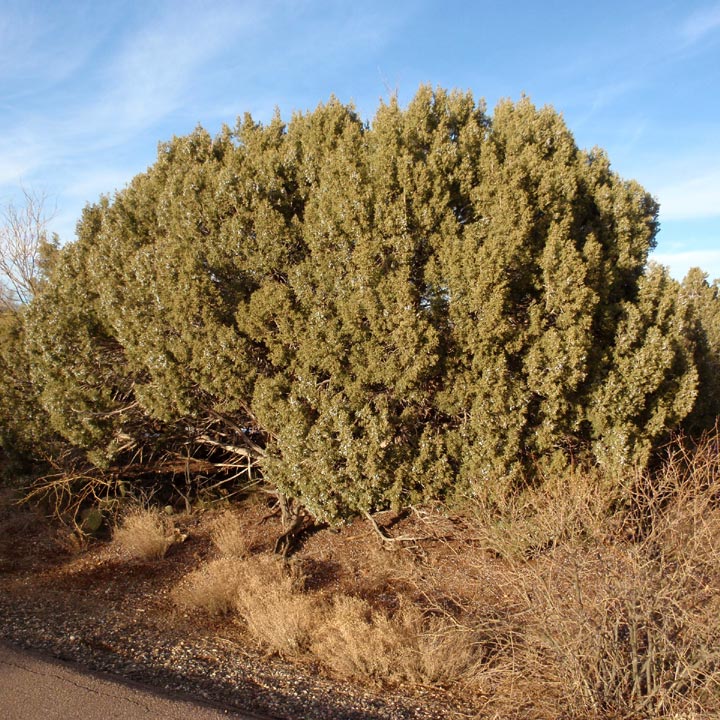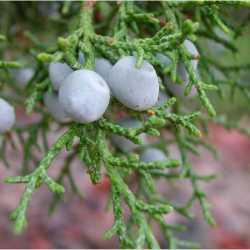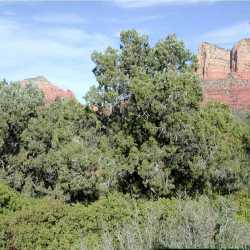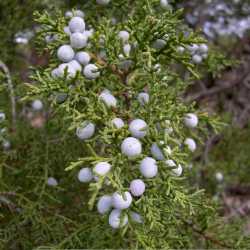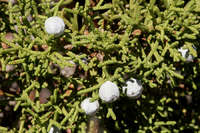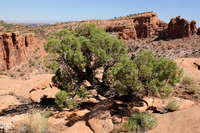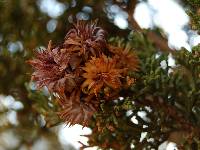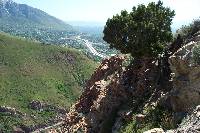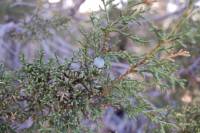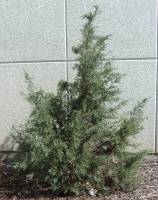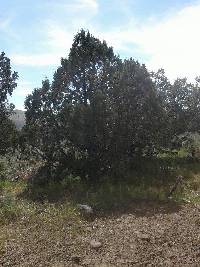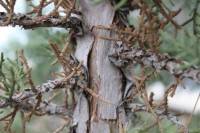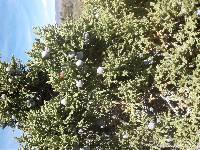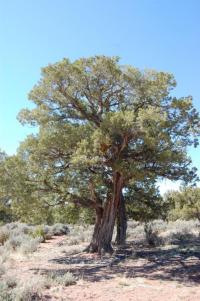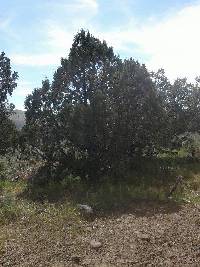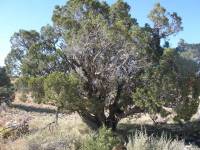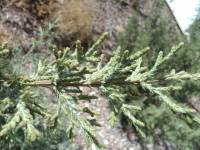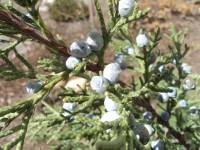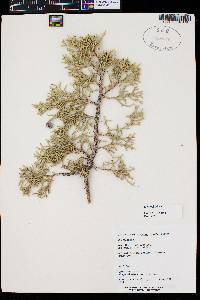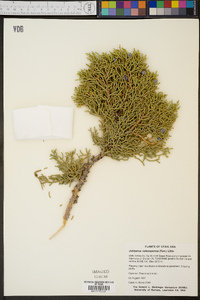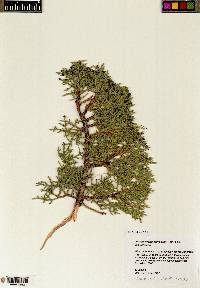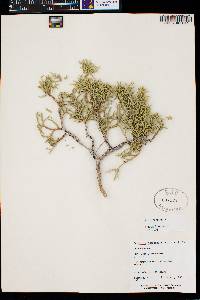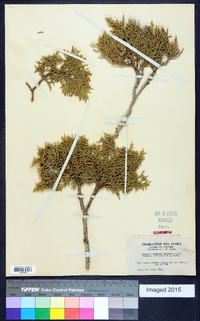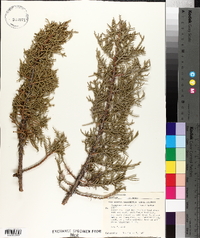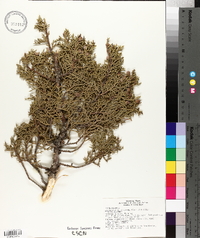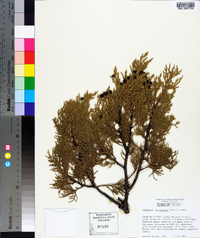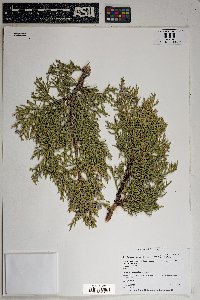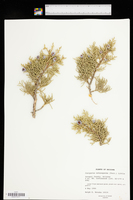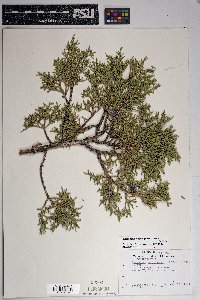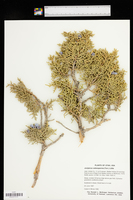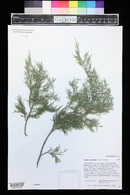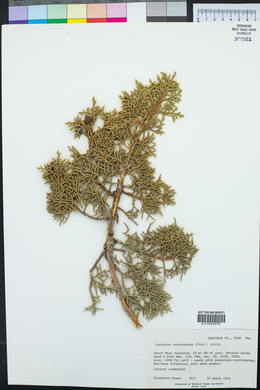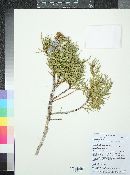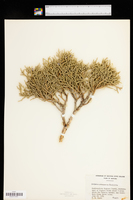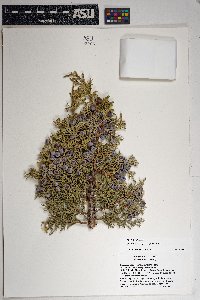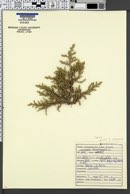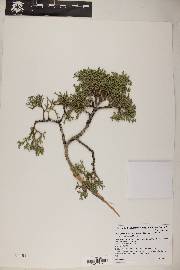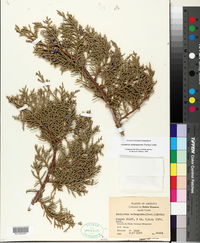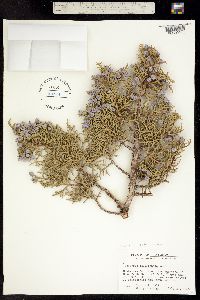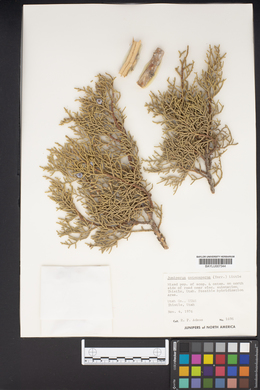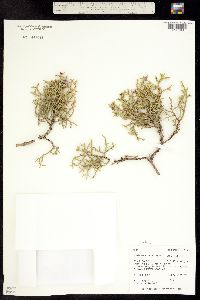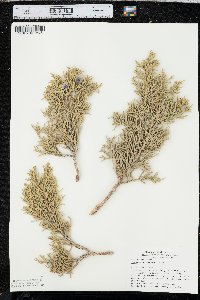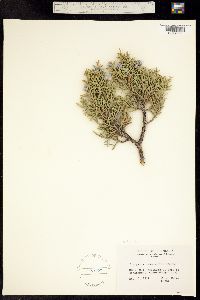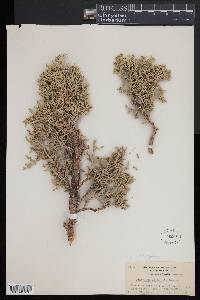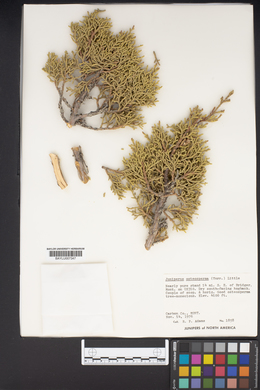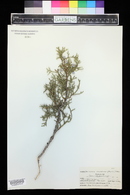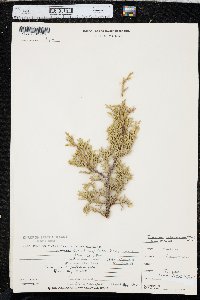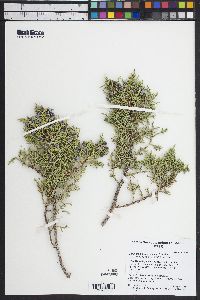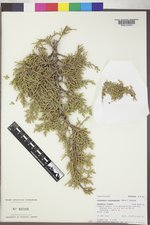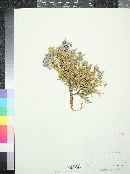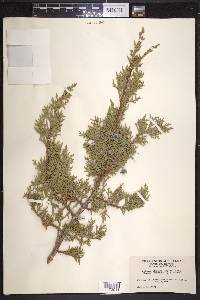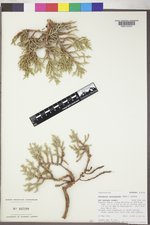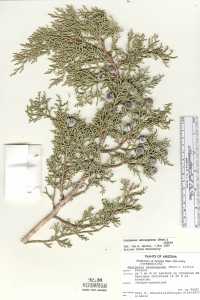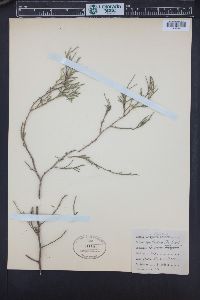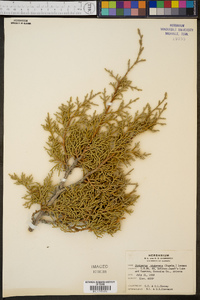
|
|
|
|
Family: Cupressaceae
Utah Juniper
[Juniperus californica subsp. osteosperma (Torr.) E. Murr., moreJuniperus californica var. osteosperma (Torr.) L. Benson, Juniperus californica var. osterosperma (Torr.) Little, Juniperus californica var. utahensis Engelm., Juniperus knighti , Juniperus knightii A. Nels., Juniperus megalocarpa Sudworth, Juniperus monosperma var. knightii (A. Nels.) Lemmon, Juniperus occidentalis var. utahensis (Engelm.) Kent, Juniperus utahensis (Engelm.) Lemmon, Juniperus utahensis var. cosnino Lemmon, Juniperus utahensis var. megalocarpa (Sudworth) Sarg., Sabina osteosperma (Torr.) Antoine, Sabina utahensis (Engelm.) Rydb.] |
Shrubs or trees monoecious, to 6(--12) m, multi- or single-stemmed; crown rounded. Bark exfoliating in thin gray-brown strips, that of smaller and larger branchlets smooth. Branches spreading to ascending; branchlets erect, 3--4-sided in cross section, about as wide as length of scalelike leaves. Leaves light yellow-green, abaxial glands inconspicuous and embedded, exudate absent, margins denticulate (at 20´); whip leaves 3--5 mm, glaucous adaxially; scalelike leaves 1--2 mm, not overlapping, or, if so, by less than 1/10 their length, keeled, apex rounded, acute or occasionally obtuse, appressed. Seed cones maturing in 1--2 years, of 1--2 sizes, with straight peduncles, globose, (6--)8--9(--12) mm, bluish brown, often almost tan beneath glaucous coating, fibrous, with 1(--2) seeds. Seeds 4--5 mm. Dry, rocky soil and slopes; 1300--2600 m; Ariz., Calif., Colo., Idaho, Mont., Nev., N.Mex., Utah, Wyo. Juniperus osteosperma is the dominant juniper of Utah. It is reported to hybridize with J . occidentalis in northwestern Nevada (F. C. Vasek 1966).
Plant: tree; usually single-trunked, less than 8 m tall; usually monoecious; STEMS short shoots 3- or 4-angled; bark gray-brown, weathering ash-white Leaves: decussate or tricussate, closely appressed, scale-like; gland obscure; margin denticulate or serrulate under magnification Cones: POLLEN CONES terminal, 2-3 mm long, cylindric; SEED CONES terminal, (5-)8-13 mm long, spheric, green, maturing brown-blue to usually red-brown in second year, dry, hard, fibrous Fruit: SEEDS 1(-2) per cone, 3-5 mm long, ovoid, strongly angled Misc: Dry rocky plains and plateaus; juniper and pinyon-juniper woodland, pine-oak forest, grassland; (350-)900-2400 m [(1150-)3000-7800 ft]; Mar-Apr REFERENCES: Bartel, Jim A. 1994. Cupressaceae. J. Ariz. - Nev. Acad. Sci. Volume 27, 195-200. Common Name: Utah juniper Duration: Perennial Nativity: Native Lifeform: Tree General: Evergreen shrub or tree, 2-6 m (7-20 ft) tall; trunk single- or multi-stemmed, mostly 0.1-0.6 m in diameter; crown rounded to somewhat conical; branches usually arising from above the base, spreading to ascending; twigs 3- to 4-angled, somewhat stout, stiff, scaly. Gray-brown, fibrous, shredding into long strips. Needles: Mostly opposite, sometimes in whorls of 3, scale-like, 1- 2 mm long, yellow-green, with an inconspicuous resin gland present on the abaxial (outer) surface of each leaf; margins minutely toothed. Cones: Male and female cones on same plant; male (pollen) cones 2-3 mm long, yellowish brown; female (seed) cones somewhat spherical, 6-12 mm long, brown or bluish brown, often glaucous, fibrous; seeds mostly 1, 4-5 mm long, light brown. Ecology: Rocky slopes, canyons, streambanks, in pure stands or mixed with ponderosa or pinyon pine and other juniper species; 800-2600 m (2600-9000 ft); all Arizona counties; southwestern U.S. Notes: Without fruiting material, the vegetation of Juniperus osteosperma is nearly indistinguishable from that of J. monosperma, Characteristics that differentiate it are a harder, mealier seed cone and a growth form that is more often single-stemmed. A very slow-growing species known to live to at least 650 years, J. osteosperma has highly decay-resistant wood. Juniper litter is thought to have an allelopathic effect on some species so that the understory beneath trees is often sparse, and there is little fuel to carry fire. However, fires carried by strong winds under hot, dry conditions can easily kill small trees. Because this species is colonized by vesicular-arbuscular mycorrhizae, severe fires can reduce propagules in the soil and restrict colonization by new seedlings. It is an important cover and shelter species for large mammals. Jackrabbits, coyotes, and birds eat the berries (cones), thereby disseminating seeds. Seeds that have passed through a digestive tract appear to germinate more quickly. Foliage is browsed by mule deer when little else is available. Uses are similar to other Juniperus spp. The wood has been used for hundreds of years as an aromatic cooking fuel by local peoples. More recently, it has become a valuable fuel for heating throughout the Southwest. The Navajo use this plant as an emetic and a medicine to treat headaches, influenza, stomachaches, nausea, acne, spider bites, and postpartum pain. Synonyms: Many, see Tropicos |
|
|
|
This project was made possible in part by the Institute of Museum and Library Services [MG-70-19-0057-19].
Powered by Symbiota

